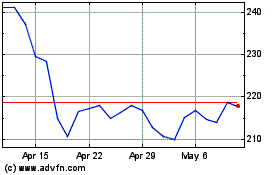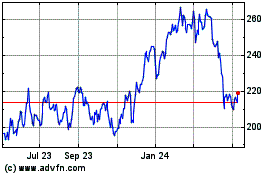By Sara Castellanos
Autodesk Inc. plans to give its employees a Netflix-like
experience when they go to the company's internal website,
unleashing data analytics and artificial intelligence to shape
applications based on workers' own app-using history, the chief
information officer said.
The project, which includes building a digital assistant to
remind employees of self-imposed training goals, is part of a
continuing effort among companies to understand and improve the way
workers use and interact with digital tools.
Switching between a consumer app like Netflix and a work website
shouldn't "feel like it's so drastic," said Prakash Kota, CIO of
Autodesk Inc., a San Rafael, Calif.-based company that sells
software that people and companies use to design and build
products, buildings and more.
So-called user experience took off in IT about a decade ago as
the iPhone and other consumer technologies gained a foothold in the
workplace, sparking a rethink in the way enterprise applications
are designed and distributed.
The pandemic and the effects of remote work, with employees
isolated from colleagues and the Help Desk, has led to a renewed
focus by some CIOs on improving employee user experience.
Now, it has become more critical to invest in that experience,
partly as a way to retain employees and to make them more efficient
and productive as they continue to work remotely, Mr. Kota said.
Autodesk's 10,300 employees will continue to work outside the
office at least through the end of June, he added.
Using tools such as data analytics and AI, Mr. Kota aims to
introduce new features to the company's internal corporate website,
Employee Hub, by the end of this year.
One such feature could be a page of personalized, AI-based
recommendations for tools that employees can use based on their
role. For example, a software engineer might be recommended
Atlassian Corp.'s Jira, used for project-tracking, based on the
tool's adoption by others in the same role.
The recommendations, offered on Employee Hub or through email,
will be generated by data analytics tools that track information
such as time spent using specific applications, Mr. Kota said. The
goal is to "understand what tools are adding value to our employees
and what tools are meaningful," he said.
By tracking employee usage of tools, managers can also gain
insight into whether employees are at risk for burnout, by
understanding how much time they spend using apps such as
videoconferencing platforms, Mr. Kota said.
Employee privacy will remain an important part of the
development of the new features on Employee Hub. "We're not
snooping into anyone's email," Mr. Kota said.
Another new feature could be an AI-based digital assistant that
guides new hires through the onboarding process and reminds them to
keep on top of self-imposed professional goals.
For example, an employee could set a personal goal of spending
two or three hours a month learning a new skill, and the digital
assistant could "nudge" the employee to keep up the effort, Mr.
Kota said. Employees can also choose to limit the amount of time
they spend on meetings; the digital assistant could remind them
when they have gone over the limit, Mr. Kota said.
"It'll assist you, but it won't decide for you," Mr. Kota
said.
Some of the features are expected to roll out over the next few
quarters and will evolve based on feedback.
The Employee Hub was rolled out early last year as a centralized
website for employees to access information about Autodesk and
their role at the company. Part of the website includes "HelpBot,"
an AI-based virtual assistant that automatically answers many
information technology-related questions.
More than 60% of IT-related requests are currently handled by
HelpBot within a minute, Mr. Kota said.
Autodesk is one of several companies trying to improve their
work force's user experience with technologies such as automation
and data analytics, said Jason Wong, research vice president at
tech research firm Gartner Inc.
In part, that is because remote workers need to effectively
collaborate with other teams and get real-time answers to technical
questions. New digital initiatives at many companies have also been
accelerated by the pandemic, he said. And, companies are trying to
mirror the technology employees use in their own lives, which is
simple, intuitive and personalized.
There are pitfalls for CIOs to watch out for when using data
analytics to track and gauge employee productivity, though.
"You don't want to make it feel like it's Big Brother," Mr. Wong
said.
And, the mix between security, performance and ease-of-use of an
app needs to be carefully calibrated. Too great a focus on
security, for example, might overpower the user experience and make
an application harder to use. "There's a fine balance there for
CIOs," he said.
Write to Sara Castellanos at sara.castellanos@wsj.com
(END) Dow Jones Newswires
January 20, 2021 19:36 ET (00:36 GMT)
Copyright (c) 2021 Dow Jones & Company, Inc.
Autodesk (NASDAQ:ADSK)
Historical Stock Chart
From Mar 2024 to Apr 2024

Autodesk (NASDAQ:ADSK)
Historical Stock Chart
From Apr 2023 to Apr 2024
